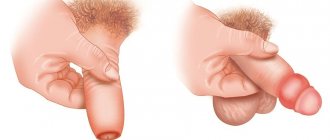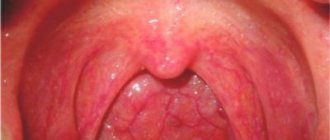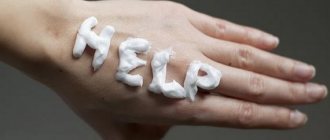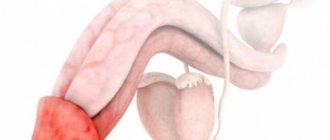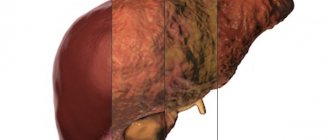Phimosis - causes
The content of the article
Depending on what causes phimosis, there are two types:
- Physiological, congenital or primary - present from birth (in some children it occurs soon after birth, but in others much later in childhood), spontaneous onset, natural protection of the head from exposure to ammonia from urine, usually disappears by 3 years or later in adolescence .
- Acquired, pathological or secondary - pronounced narrowing of the foreskin. It cannot be retracted even when separated from the glans penis, due to inflammation or damage to the skin of the penis, incomplete circumcision and some skin diseases. Requires treatment.
One day - and everything is in order!
Circumcisio
- Cost: 45,000 - 65,000 rubles.
- Duration: 30-60 minutes
- Hospitalization: 1 day in hospital
More details
The most effective treatment for phimosis is circumcision. During this operation, the foreskin is removed completely or partially, as a result of which there are no more problems with exposing the head of the penis. Of course, our Center performs operations for phimosis. Our patients often ask how difficult this operation is. The question of the complexity of any operation is not easy for any doctor, since there are no “easy” operations. Each surgical intervention is a responsibility for human health, so we approach all operations as complex. However, if we consider that we have been treating phimosis for a very long time, we can say that we have worked out circumcision to a sufficient extent. The technique of circumcision surgery is relatively simple, and therefore the risk of developing postoperative complications is reduced to almost zero. As for further postoperative stay, the patient (if desired) can either stay in the hospital for a day, or the operation can be performed on an outpatient basis - in the morning he comes for the operation and in the evening he goes home. As a rule, after 2 weeks a man can live a full life.
Phimosis in boys
The role of physiological phimosis is very important during the period when the child is in diapers. Because stool bacteria react with urine and produce ammonia. This can lead to infection of the glans penis and diaper rash.
At birth, the foreskin is connected to the head of the penis, and this is a completely normal (physiological) phenomenon. As the child grows, spontaneous separation of the foreskin from the head of the penis occurs.
In boys, you can also try to stretch the foreskin by pulling backwards. The most practical way to do this is after bathing using a special cream. At this moment the skin is most elastic.
At this point, smegma may appear - whitish-yellowish accumulations under the foreskin of the penis. These are dead cells connecting the foreskin to the skin of the glans. They can be removed while bathing with water or baby oil.
The influence of phimosis on sex life
Already at the first stage of the disease, the foreskin after the onset of erection requires additional effort to expose the head. On the second, the process can only be carried out while the penis is at rest. Men are worried that the sensitivity of the head after circumcision may decrease significantly. In reality, the changes are minor. In case of hypersensitivity of the head of the penis, circumcision of the foreskin can be used, among other things, to reduce excessive excitability.
Ignoring phimosis significantly spoils a man’s sex life:
- pain – after all, the penis can increase in size up to 50%;
- accumulation of seminal fluid and female secretions in the preputial space of the penis - a focus favorable for infection arises;
- microtrauma of the foreskin during sexual intercourse;
- the likelihood of pinching the head of the penis - the development of paraphimosis;
- decreased sensitivity of the penis.
Concerns about how the penis looks after circumcision are unfounded. Surveys conducted by sexologists show that a penis with an open head looks more attractive to women.
Paraphimosis
Paraphimosis most often occurs when cleaning the glans penis. This is squeezing the head of the penis, slightly pushed back, by its foreskin. In no case is it recommended to forcefully pull out the foreskin, because paraphimosis may occur. This can lead to an inability to circulate through the head, bleeding, infection and scarring, all of which are accompanied by severe pain.
If this happens, professional help will be needed to restore the reduction.
Firm circular pressure with your hand on the head of the penis can reduce the edema (swelling) so that the foreskin changes position. If this fails, an incision is made under local anesthesia, temporarily solving the problem. After the swelling has subsided, they resort to circumcision.
Phimosis - symptoms and treatment
Non-drug treatment
Physiological phimosis can be eliminated without surgical treatment . [4] The most acceptable method is gradual gentle stretching of the foreskin. Treatment of phimosis in children can be carried out starting from six months.
The elimination of phimosis using a bloodless method based on two principles.[7]
The first principle is a slow impact on the narrowed cavity of the foreskin. Treatment is carried out in stages and can last from 3-5 months to several years. During such events, the head of the penis ideally opens by the beginning of puberty, i.e. by 12-15 years. These dates are due to hormonal changes in the boy’s body.
The second principle is the most gentle stretching of the foreskin, in which even minimal injuries (tears, cracks) of the narrowed area are unacceptable. Each procedure is designed to dynamically open the foreskin cavity by 1-2 mm from the initial state. In order to improve the stretching of the flesh, before the procedure the patient should lie for 10-15 minutes in a bath with decoctions of chamomile, string, celandine or calendula. Thanks to this, the skin is steamed, stretches easier and is less injured. After the bath, stretching manipulations should be performed for at least 15 minutes. Then the foreskin should be treated with baby cream, levomekol, ELMA ointment 5% or solcoseryl - they help heal any microtears that arise. At the end of the procedure, the child should lie on his back for several minutes without diapers or underwear.
Initially, these procedures are performed by a doctor, who is obliged to show the technique of such manipulations to the parents. In the future, treatment comes down to the parents' daily compliance with the doctor's recommendations and medical monitoring of the dynamics of the process of displacement of the foreskin once every 3-6 months.
These principles are a very effective way to treat physiological phimosis. Thanks to them, the head of the penis opens halfway after 2-3 months in 91% of cases. In general, the success of treatment using this method depends on how regularly the procedures are carried out.
Also, in the treatment of phimosis, rings and bandages , which stretch the foreskin and fix its shape.[10]
Drug therapy
This treatment method involves regular and long-term use of corticosteroid ointments. They are applied to the foreskin and glans penis to increase the elasticity of the tissue and improve its stretchability.
Also, for phimosis, taking glucocorticoids is indicated. They are designed to reduce swelling and inflammation, accelerate the healing of microcracks, and suppress the activity of connective tissue formation.
The most effective ointments to combat phimosis are clobetasol 0.05%, betamethasone 0.05%, prednitop 0.25%, gel 2.5%.
Physiotherapy
Physiotherapeutic treatment methods include:[11]
- Phonophoresis is a painless injection of drugs into the deep layers of the skin using ultrasound. In case of phimosis, anandrogen-containing oil preparations are applied to the external opening of the foreskin. The exposure is carried out using a labile technique with a radiation frequency of 880 Hz, a working surface of 0.5 cm2, an intensity of 0.4 W/cm2 and a continuous mode of ultrasonic vibrations. The duration of the procedure is six minutes. They are carried out every other day for 1-2 weeks. This method provides effective treatment of the disease.
- Using a button probe to gradually gently stretch the foreskin. It is used in conjunction with 2.5% dihydrotestosterone gel and allows you to separate synechiae. This procedure is carried out twice a week after hygienic baths with decoctions of medicinal herbs.
Surgical treatment
Circular excision of the foreskin is indicated in cases of cicatricial phimosis. In this case, the foreskin can be removed partially (excision along the border of fibrous changes) or completely - partial or complete circumcision. In children it is performed under general anesthesia, and in adults under local anesthesia.[6] Complications after circumcision are rare. Sometimes bruising occurs on the penis, but this goes away over time.[12]
Other methods of foreskin plastic surgery:
- Prepucioplasty is performed for phimosis in adolescents with minor cicatricial changes in the skin fold. During the operation, a longitudinal incision is made along the upper part of the penis and adhesions are removed, then the wound is sutured.
- Surgical treatment with clamps is performed in children. Use Mogen clamps or disposable Plastibel clamps. Disposable clamps are placed on the head of the penis after a small incision, fixed and left for a week. No stitches are needed. The Mogen clamp is applied for 1-5 minutes and removed after cutting off the skin.
Laser treatment of phimosis
This method of treating phimosis is called the photodestructive method. Using a laser, the doctor excises and removes the abnormal tissue. The beam aimed at the flesh has a temperature of up to 300 ℃. Once on the fabric, it evaporates, or vaporizes.
The operation lasts approximately 20 minutes, including the procedure itself, preparation of documents and discharge. The laser beam quickly seals the vessels, without damaging the tissues and preventing blood loss.
Treatment of phimosis with traditional methods
The effectiveness and safety of traditional methods has not been scientifically proven. Phimosis often goes away on its own with age, which reinforces misconceptions about the effectiveness of alternative medicine.
Rehabilitation
After the operation you will need:
- Maintaining cleanliness - proper care will help avoid inflammation and suppuration. The treatment site can be treated with antiseptics: chlorhexidine and miramistin. Baths with potassium salt of permanganic acid are also useful.
- Monitoring by the attending physician - if inflammation, suppuration and pain occur, you should consult a doctor.
- Rest - during the first 2-3 days, it is advisable to lie down more often, as this increases the outflow of blood from the penis and reduces the development of tissue edema.
- Strict adherence to the dressing schedule established by the attending physician. After circumcision, bandages are applied to the penis, which are worn all the time until the penis heals, and are changed periodically. To wash the penis with warm and soapy water, the first change of bandages is carried out after 48 hours.
- Local treatment with antibacterial ointments. To avoid suppuration, your doctor may recommend using antibacterial ointments, such as Levomekol and Levomethyl.
- It is important to ensure that the child does not touch the wounds with his hands. Instead of water procedures, it is better for the boy to be rubbed down until complete healing.
- It is not recommended to wash the penis for 7 days until the stitches are removed. To avoid getting the wound wet while showering, you should wear a condom on the penis. It is also important to ensure that urine does not come into contact with the wound, otherwise inflammation may develop and the wound will heal more slowly.
- Comfortable underwear. If the foreskin is removed on a small child, then the best option would be thick panties so that he does not touch his penis during play. An adult man should wear loose underwear that does not restrict movement.
- Until complete healing, abstinence from sexual activity will be required.
Phimosis – Beaugé technique
For children during puberty and adult men, another conservative (non-invasive) treatment method is used - the God technique.
The meaning of the method is stretching the foreskin. If the skin is regularly stretched for a long time, it reacts to the irritant by cell proliferation or stretching.
You need to stretch the foreskin of the penis through masturbation as often as possible (sexual masturbation).
At the same time, a corticosteroid cream is used. It provides greater elasticity to the foreskin.
Lifebuoy in the “sea” of information
Nowadays, despite the general availability of medical information, phimosis is still a fairly widespread pathology, primarily because it is not given due attention. On the other hand, quite a lot of different information has now appeared on radio, television, and the Internet. Whatever treatment methods are offered, however, the effectiveness of many of them raises some doubts. In this article we will talk about what phimosis is, what are the causes of its occurrence, the degree of development, and treatment methods.
Phimosis – surgery
In the most severe cases, surgery is required. It comes in two types:
- Circumcision is the complete resection (removal) by surgery of the narrowed foreskin of the penis covering the glans. Absorbable sutures are placed between the skin and mucous membranes. The procedure lasts from half an hour to an hour. It is performed under local anesthesia. Recovery takes about 10 days.
- Prepucioplasty is a partial resection. The opening of the foreskin of the penis is surgically expanded to the required size while preserving the foreskin. This leads to faster recovery.
When does the disease occur?
Phimosis is a common disease that often does not cause concern to patients. During intrauterine development, the head and preputium are formed from the same tissue. In this regard, the congenital disease is observed in 95% of male children.
In twenty percent of boys, the head of the penis opens completely at the end of the first year of life. Fifty percent by the end of the second year. Elimination of physiological phimosis occurs independently, during the first six years of a child’s life. In some cases, namely during sexual development, the preputium completely opens the head of the organ.
Postoperative period
The norm is the presence of discomfort and unpleasant sensations in the area of surgical intervention for 3 to 7 days. Recovery is fastest after laser surgery.
To avoid complications and relapse, you must strictly follow all doctor’s recommendations. Regular rinsing of the surgical area with specialized solutions may be required.
If there are stitches on the surgical wound, the patient is prescribed regular dressings. The period of time between dressings is determined by a specialist individually for each patient. Sutures are removed seven to ten days after surgery. As a rule, in the first 14 days after surgery, the patient is prescribed complete sexual rest.
Partial blockage of urine
Problems with urination occur when the disease reaches stage 4. This is manifested by a strong narrowing of the foreskin. the free passage of urine is blocked. Patients experience a decrease in the intensity of urination. In some cases, there is no stream, and intermittent urine flow is observed.
Under the pressure of urine, the foreskin swells. The patient experiences discomfort and pain when urinating. Delaying treatment leads to diseases of the urinary system. If partial blockage of urine occurs, you should immediately visit a doctor at our medical center.
Description of physiological childhood phimosis
In children, the lack of mobility of the prepuce is not associated with insufficient volume. In most male children, the inside of the foreskin is connected to the head of the penis. Over time, the mucous membranes of the foreskin and glans will separate.
Parents of an infant with physiological phimosis should not attempt forced exposure of the head. Such attempts can lead to the development of a pathological form of the disease.
The separation of the mucous membranes is carried out independently, when the epithelial cells are exfoliated. The foreskin protects the head from the negative influence of external factors. Artificial acceleration of the separation process can lead to the development of complications.
Is it necessary to steam the penis in a solution of potassium permanganate after surgery?
The procedure for caring for surgical sutures and the medications recommended for this should be prescribed by the attending surgeon. But if you answer the question posed, then a solution of potassium permanganate is an outdated and far from the most effective remedy.
If we talk specifically about phimosis, potassium permanganate often only worsens the healing process of surgical sutures, since it greatly dries the skin and causes microcracks. Today, urology has more effective complex drugs that have antimicrobial, anti-inflammatory, and often analgesic effects: Miramistin, Levosin, etc.
Symptoms
Parents often treat phimosis in boys very calmly, because There are practically no complaints from children, and doctors assure that by the age of seven this situation will normalize. In some cases, phimosis in boys may be indicated not only by difficulty exposing the foreskin, but also by the inability to urinate normally. The baby may worry, cry, urine does not always flow out in a stream, sometimes only in a drop.
Phimosis in men is accompanied by other symptoms, the degree of manifestation of which increases in proportion to the stage of the disease. If the disease progresses, inflammation appears, which accompanies pain in the tissues of the foreskin. Purulent discharge, high body temperature, general malaise and weakness, difficulty urinating, pain during erection are symptoms characteristic of phimosis.
Carrying out conservative therapy
In some cases, to treat congenital phimosis, specialists use methods of forced stretching of the foreskin. Specialized techniques can gradually eliminate phimosis. It must be taken into account that attempts to independently stretch the prepuce can cause serious complications. Conservative treatment is always strictly supervised by a qualified and experienced doctor at our medical center.
To obtain maximum effect, certain manipulations must be carried out regularly. Their task is to stretch the tissue of the foreskin. Violation of the time intervals between procedures will lead to the ineffectiveness of the prescribed therapy.

